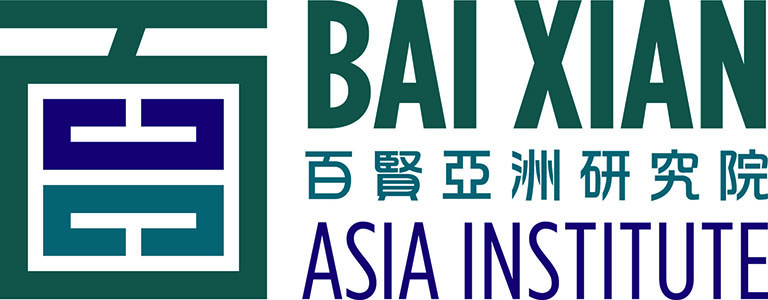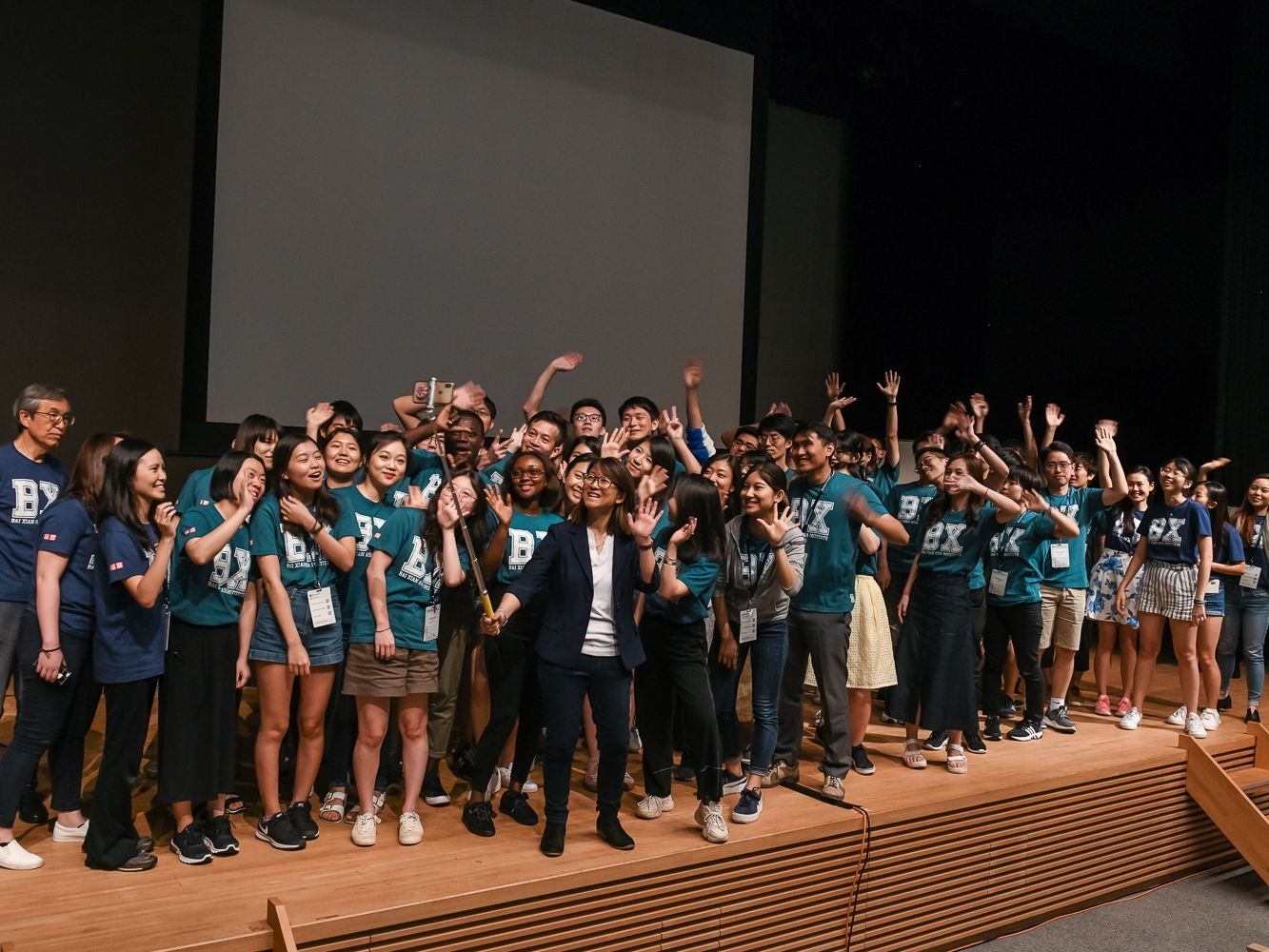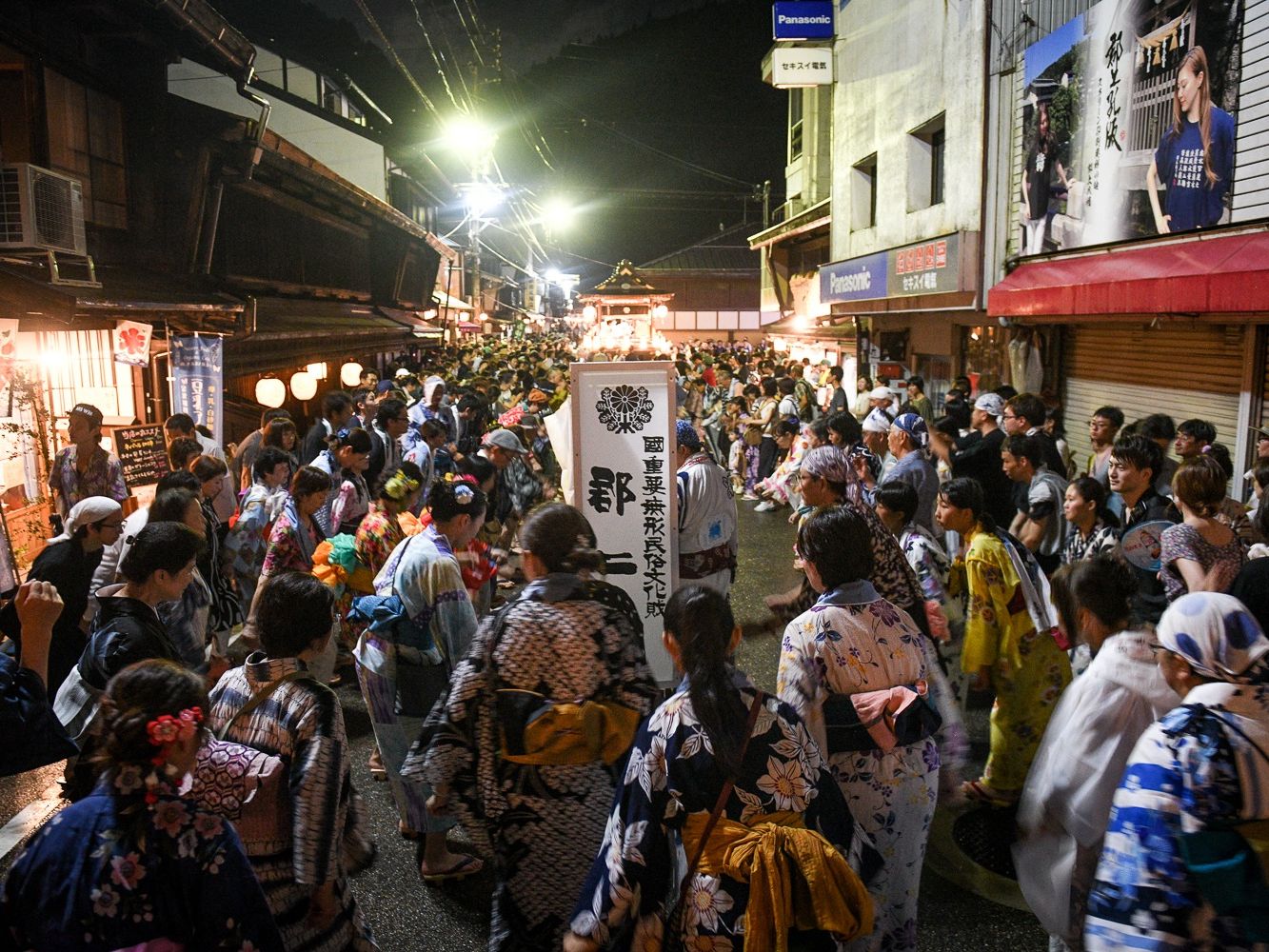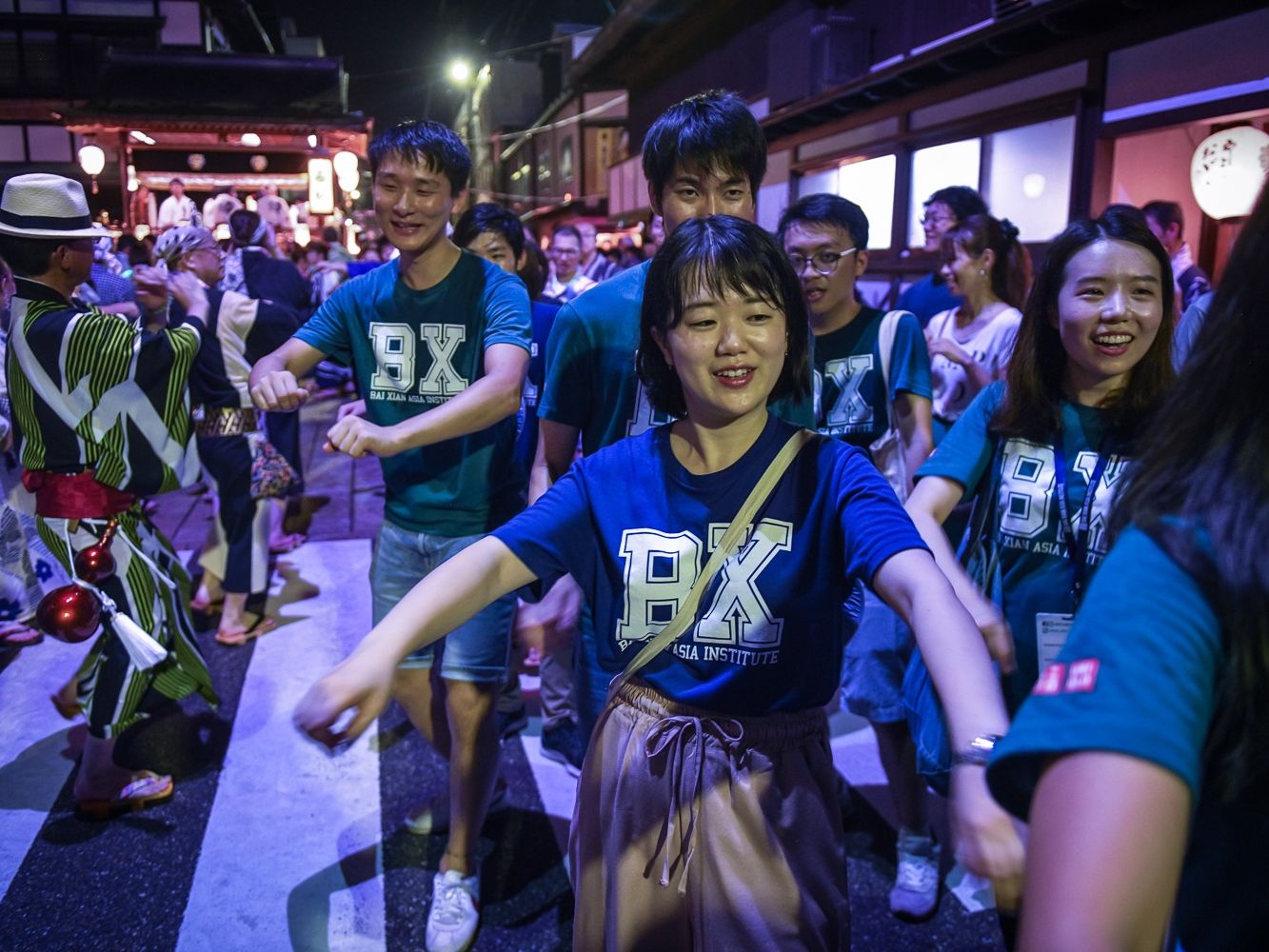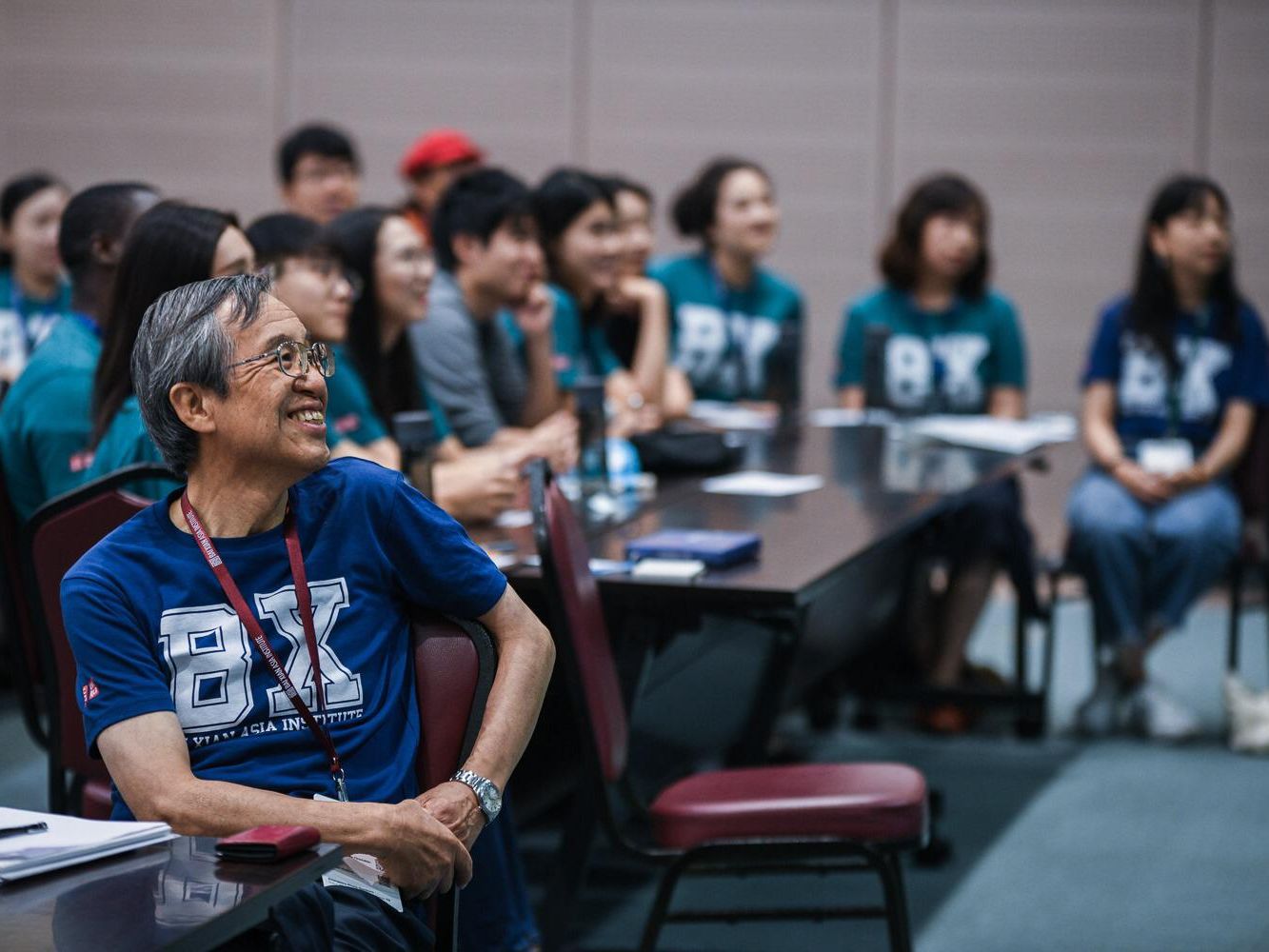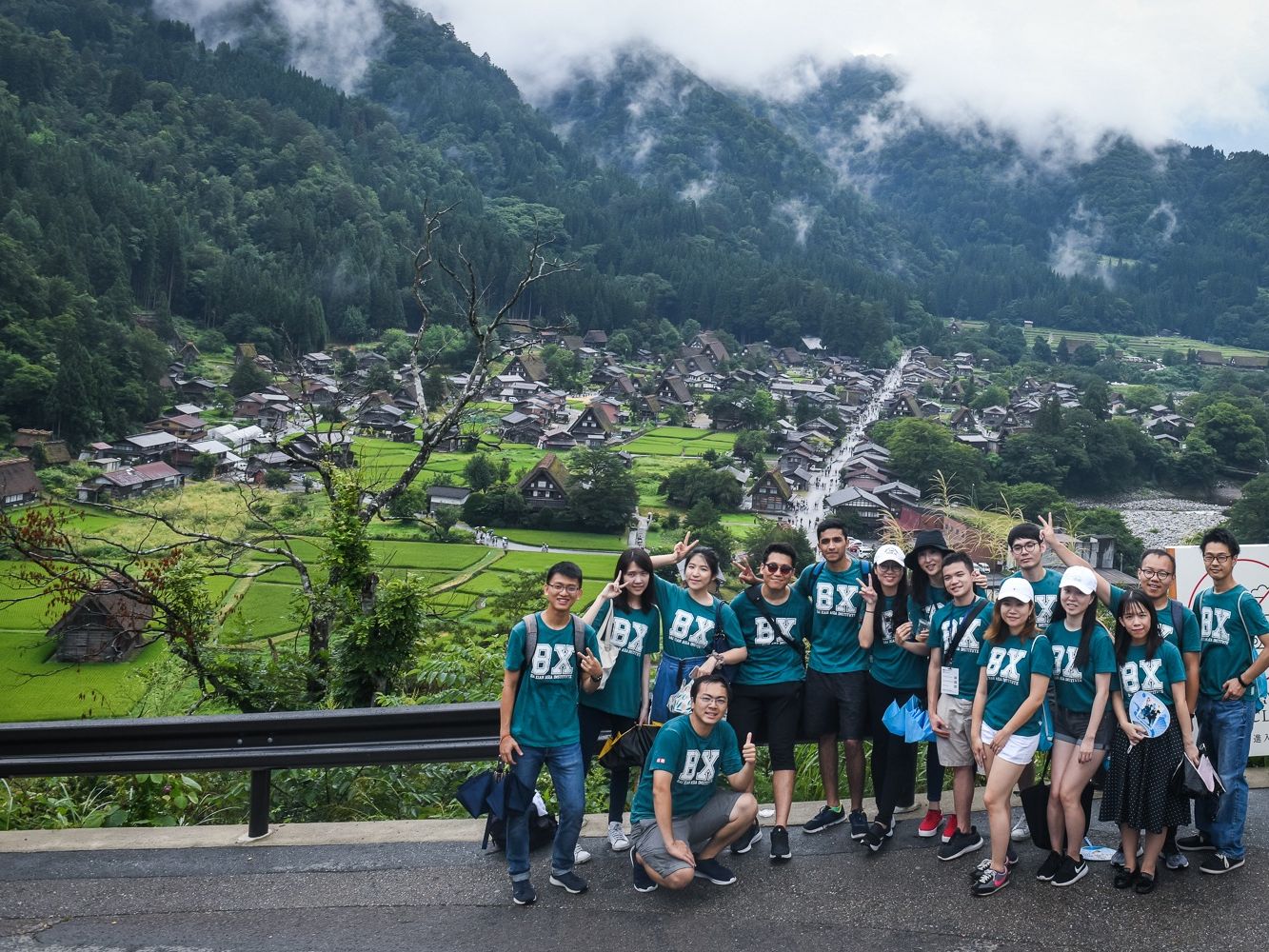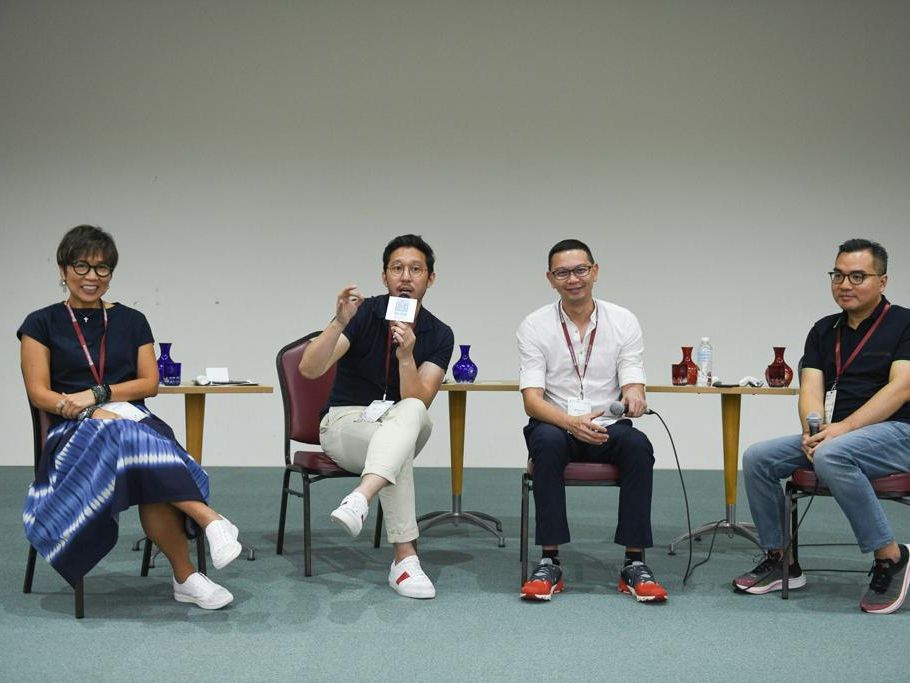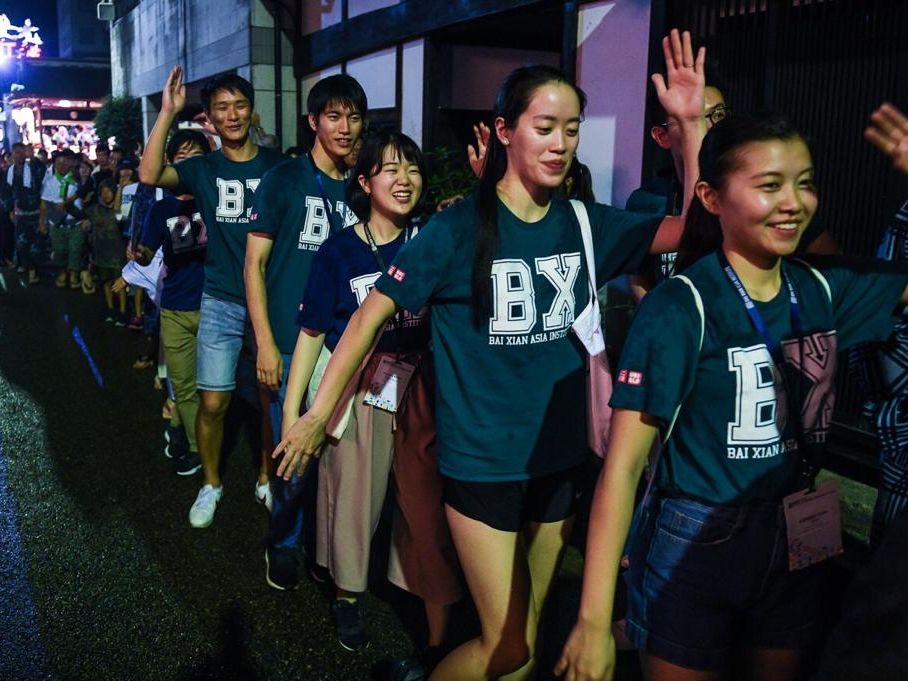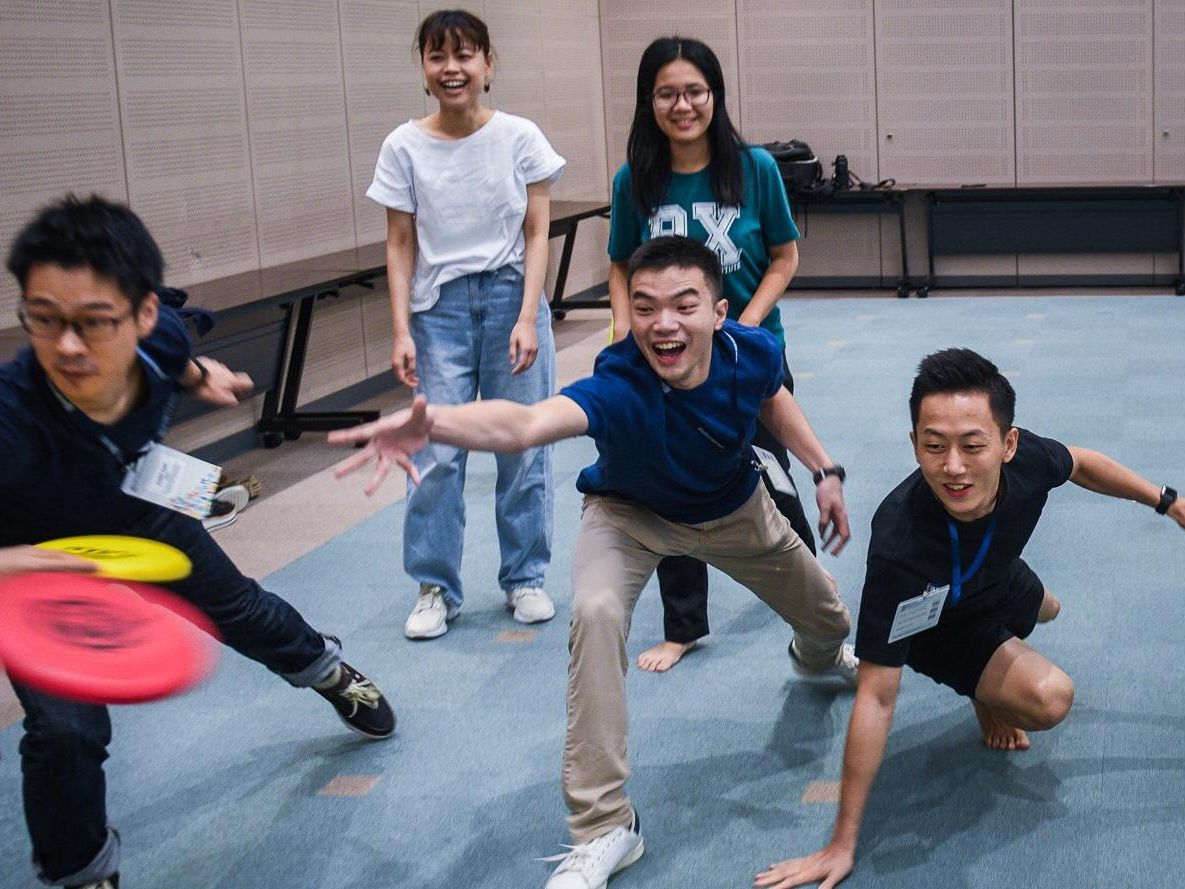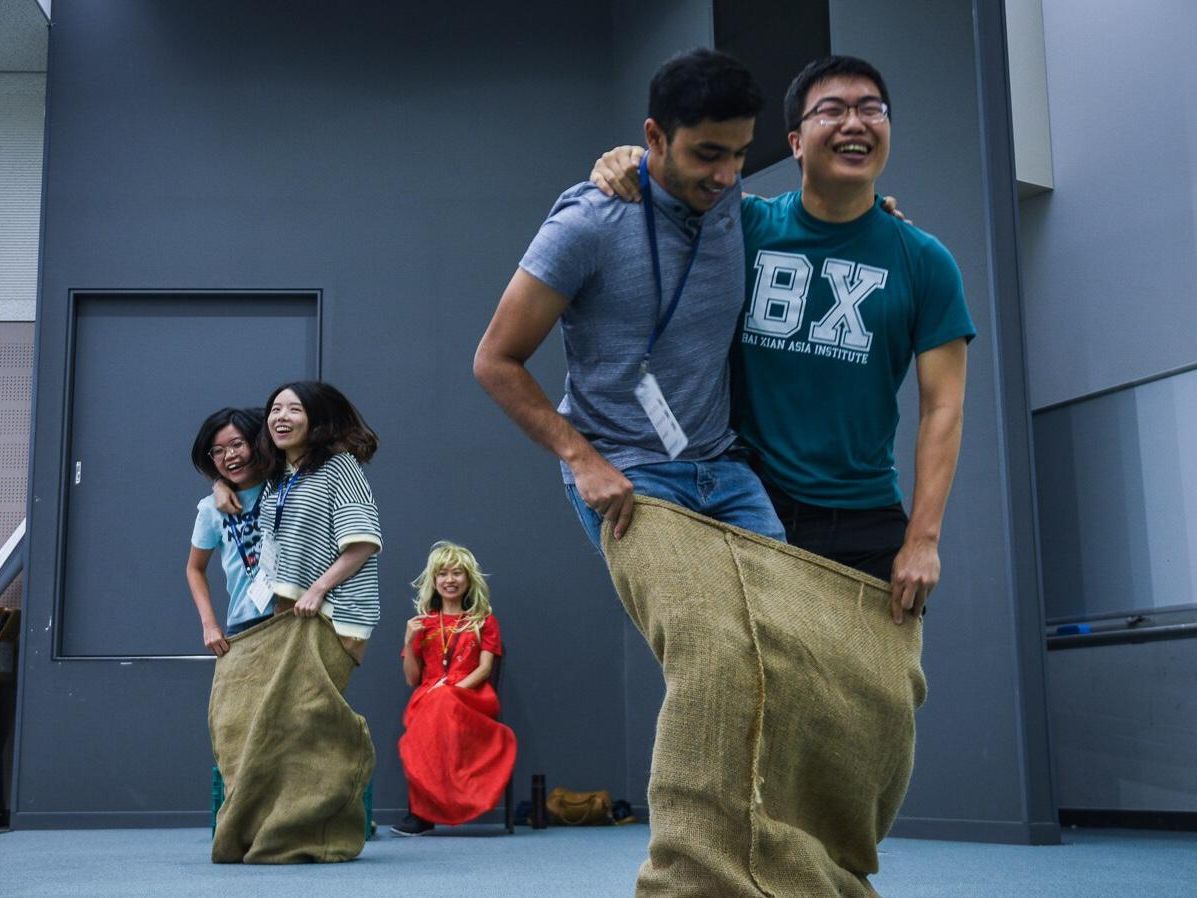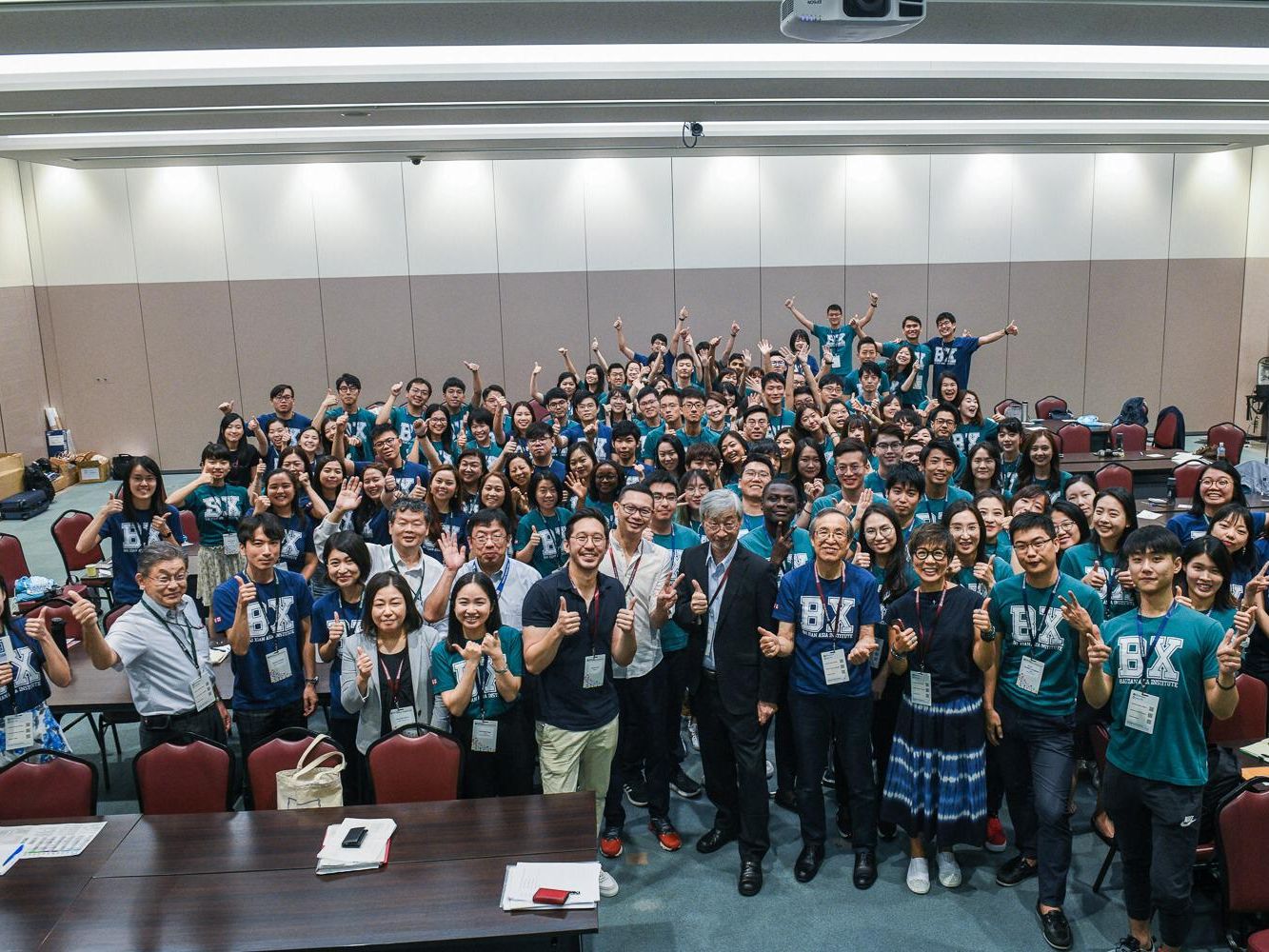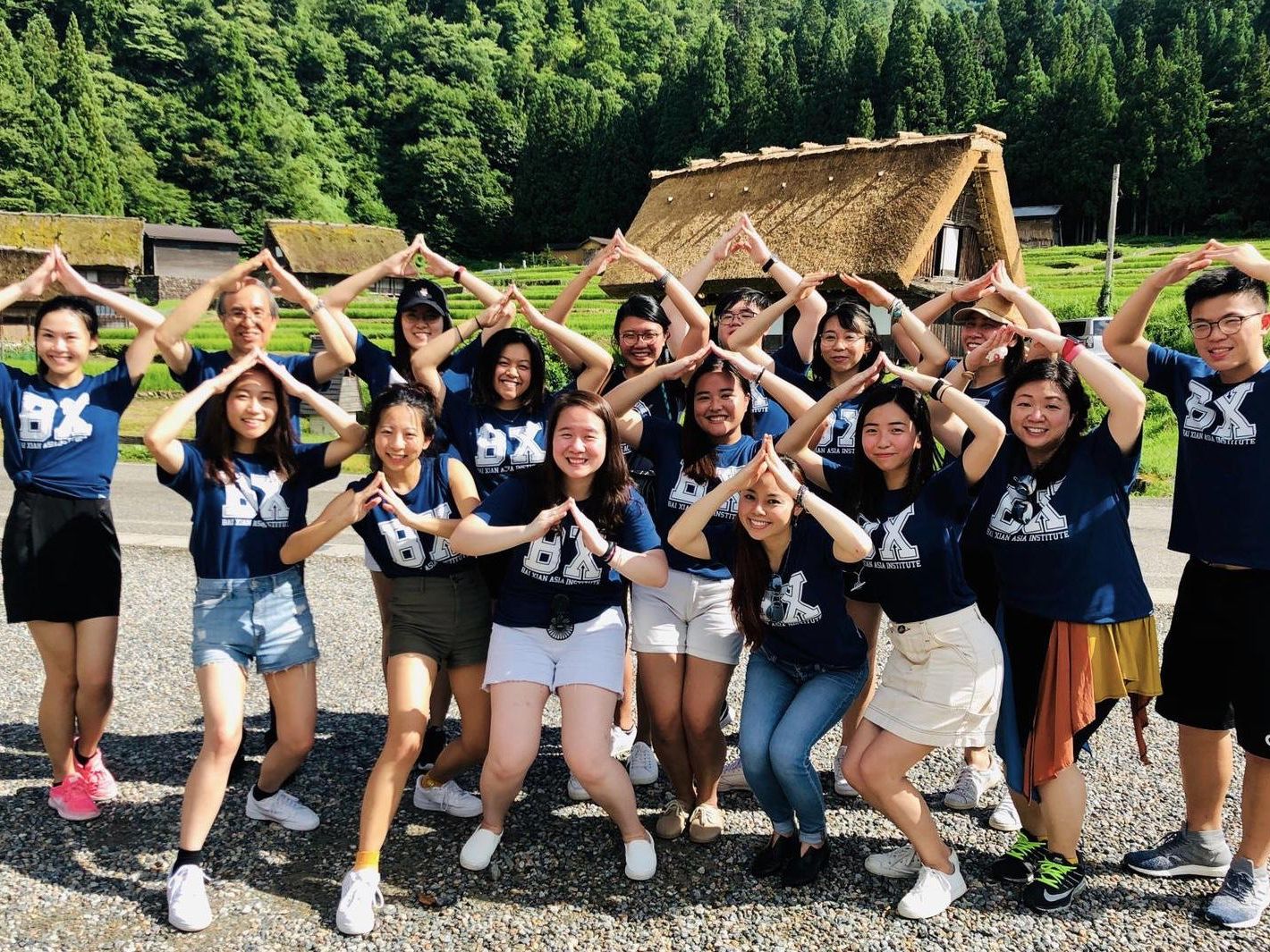The fifth annual Bai Xian Asia Institute (BXAI) Summer Program officially kicked off in Osaka, Japan, on August 8, with 84 students from BXAI’s 16 partner universities across East Asia gathering for two weeks of immersive cross-cultural learning and exploration.
Day 1
At the Opening Session, we were warmly welcomed by Prof. Shinsuke Kawazoe, Executive Vice President of Kyoto University, and Prof. Katsuichi Uchida, President of BXAI, who introduced this year’s Summer Program theme, “Harmonious Coexistence”, and highlighted the challenges we face today in terms of sustainable development. Ms. Ronna Chao, CEO of BXAI, then spoke about the history and mission of BXAI and reminded us to participate in discussions and activities respectfully over the next two weeks with the common aim of building bridges. “We ourselves are not the entire bridge, but we are a part of the bridge. You could be a pillar, or you could be a pipe. The important thing is to extend and connect,” she said.
Mr. Jason Lai, international orchestral conductor and TV presenter, concluded the Opening Session with an inspiring lecture on leadership as defined by growth, responsibility, and presence. Using lobsters as a metaphor for growth (lobsters continuously shed their shells as they grow), Jason spoke about “lobster moments” as opportunities for us to strengthen ourselves in times of stress and difficulty. He also encouraged us to take responsibility to drive our lives forward and to be present, meaning being completely honest with ourselves. “What ‘lobster moments’ will you have in these two and a half weeks and beyond?” Jason asked, challenging us to further explore these often-overlooked components of leadership for ourselves.
That afternoon, we participated in two panel sessions: one on sustainability and another one on the “Asian century”. The sustainability panel session was moderated by Mr. Jason Lai and featured panelists Mr. David Yeung, CEO of Green Monday; Mr. Melvyn Yeo, co-founder of TRIREC; and Ms. Ronna Chao; who shared about what the concept of sustainability looks like in practice, specifically in the fields of business, social entrepreneurship and apparel. We were encouraged to start our own sustainability journeys by taking small steps toward a greener lifestyle – whether it is by turning the taps off when we brush our teeth or by adopting a plant-based diet. “Green is the new black,” said David. “Sustainability should not be charity but an adventure.” The panel ended with a lively Q&A session, during which we discussed the rationale behind recent trends such as veganism.
At the Asian century panel session, moderated by Dr. Scott MacLeod, Associate Director of the East-West Center, we had the opportunity to hear from Ms. Nonaka Tomoyo, Chair and Founder of the NPO GAIA Initiative; Mr. James Kondo, Chairman of the International House of Japan; and Mr. Qu Pengcheng, Head of Geopolitical and Regional Agenda at the World Economic Forum. It was an enlightening session indeed as we learned about the rise of Asia and what that means for us and the rest of the world. The panel session later transformed into an open discussion forum that Dr. MacLeod called “Chat Chat Chat”, where we were invited to share our ideas on Asia-specific issues such as population, technology, and intercultural relations. “My main objective is to really work on shifting the focus from success to significance. In your generation, it is probably crucial to think about significance, partially because the success model will be broken in your time,” said Mr. Kondo.
We finished off our first day with a bang by playing “The Best Game” to see who could head to the welcome dinner first! Even during dinner, Ronna took the opportunity to build community by interviewing participants, BX staff, and some behind-the-scene crew members asking them to share about their study and career paths with fellow scholars.
Day 2 and 3
Day two was all about team building! The Hutong from Beijing, led us in a series of exciting activities including lawn games and improv sessions, which honed our communication and collaborative skills in a fun and interactive way. We also participated in an “art wheel” activity that challenged us to design art pieces in different themes and forms and later present our work before our peers.
We dove deeper into what it means to be a leader at the leadership workshop held on day three. Led by Dr. Scott MacLeod and Ms. Kartika Anindya Putri, teaching affiliate at the East-West Center, the workshop invited us to explore the roles of identity, diversity, and authority in relation to leadership through interactive quizzes and thought-provoking discussions. On diversity, Dr. MacLeod said, “Differences are not only found in how we look but how we think.” Ms. Putri encouraged us to nurture our individual talents, saying, “We need to learn to be different for each other, rather than being different from each other.”
That afternoon, we attended a “Brand, Basics and Beyond” talk by Ms. Cathy Chon, founder of the multidisciplinary consulting agency, CatchOn. Introducing us to branding strategies such as how to use distinctive brand elements and keeping a logo simple yet meaningful, Cathy also highlighted the power of emotions, which trigger lasting impressions of a brand. Applying the concept of branding to daily life, Cathy said, “We are our own brand – as we move forward in life, we should try to leave a positive impression on those we meet and always stay consistently true to our values and morals.” Wise words to live by!
Day three concluded with a “Trade-Environment Linkage in East Asia” lecture by Prof. Koo Mingyo from Seoul National University’s Graduate School of Public Administration. Speaking about how the relationship between the environment and trade is driven by knowledge and power in an ever-changing East Asian landscape, Prof. Koo remarked, “Knowledge matters, and knowledge is power.” Responding to student questions about his research methodology, Prof. Koo humorously advised students that good research comes only when you “torture your data until it confesses.”
Kyoto and Gifu
After three fun days in Osaka, we headed to Kyoto and attended an orientation and campus tour hosted by Kyoto University staff in preparation for more sessions there later this week.
On Monday, we embarked on our three-day excursion to Gifu, a scenic prefecture in the center of Japan, where we participated in more soft skills training and cultural activities. At the self-awareness workshop, led by Mr. Keith Coats and Ms. Tamryn Batcheller-Adams from TomorrowToday, we made use of a personality system called the Enneagram to explore our true selves and understand how we perceive the world. “When we look at the world, we see the world not as the world is, but how we interpret it through our own lenses, and through our own personalities,” said Tamryn.
Some of us were slightly apprehensive heading into the public speaking workshop, but were quickly put at ease by Ms. Angela Cheung, who led the session in a fun and engaging way that made public speaking seem less intimidating. “You’re going to go from stage fright to stage bright,” said Angela, Managing Director of creative agency, APV, and a member of BXAI’s Communication and Development Committee, who offered a wealth of practical tips and advice including how to refine self-introductions and practice body language, and most importantly, to “be yourself – the very best version of yourself.”
On the evening of our second night in Gifu, we took part in the Bon Dance Festival, a Japanese Buddhist custom that sees people dance all night long to honor the spirits of ancestors. Joining the locals on the streets, we danced the night away in our BX tees, soaking up the culture and enjoying every moment of this joyous and memorable experience.
The last day in Gifu started with a public speaking showcase, where some of us put our newly acquired knowledge into practice by speaking about a variety of subjects that ranged from sociopolitical issues to cultural topics. We wrapped up our trip with a special visit to Shirakawa-go, one of Gifu’s most renowned tourist spots and a UNESCO World Heritage Site. The scenery was stunning despite the heavy rain, and we treasured the opportunity to learn more about Japanese history as we spent the afternoon exploring the village of gassho-style houses that date back to the 1800s.
Looking ahead, we are pumped for all that’s lined up for the coming week in Kyoto, which will include hands-on activities, academic sessions, and art and culture experiences. We look forward to digging deeper into what “Harmonious Coexistence Toward 2050” looks like and what it means for each of us as unique individuals from different backgrounds and cultures living in today’s ever-changing global landscape.
